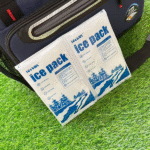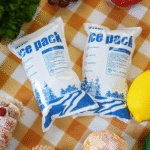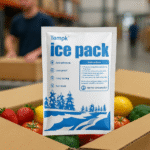Dry Ice Packs Fast Delivery: How to Ensure Quick and Safe Shipping for Perishable Goods?
Shipping temperature-sensitive items like food, pharmaceuticals, and biotech samples requires careful consideration. Dry ice packs fast delivery offers a reliable solution for ensuring goods remain at the right temperature during transit. In this article, we’ll explore the importance of fast delivery for dry ice packs and how you can leverage it for cost-effective, efficient, and safe shipping of perishable products.
-
The benefits of dry ice packs fast delivery for businesses dealing with perishable goods
-
How fast delivery can help you maintain regulatory compliance and ensure product safety
-
Key considerations for shipping with dry ice
-
Best practices for optimizing your shipping strategy
-
Ways to choose the best dry ice shipping provider
What Is Dry Ice Packs Fast Delivery, and Why Is It Crucial?
Dry ice packs fast delivery ensures that temperature-sensitive products reach their destination quickly while maintaining the correct temperature for preservation. Dry ice is widely used for shipping perishable products because it sublimates at -78.5°C, keeping goods cold without the mess of traditional ice.
Key Benefit:
With fast delivery options for dry ice packs, businesses can minimize the risk of spoilage, reduce costs associated with delays, and ensure timely delivery for products that require immediate use, like pharmaceuticals.
How Dry Ice Packs Fast Delivery Works
When you opt for dry ice packs fast delivery, the dry ice is packaged in a way that allows it to sublimate slowly during transit, keeping your products at the desired temperature. Providers offer various delivery options, from next-day shipping to expedited services, ensuring your products arrive safely and on time.
| Shipping Method | Benefits | Drawbacks | Real-World Applications |
|---|---|---|---|
| Fast Delivery with Dry Ice | Ensures product safety, minimizes spoilage | Higher cost, limited availability | Pharmaceuticals, seafood, frozen food |
| Standard Shipping | Cheaper, slower | Higher risk of spoilage | Non-perishable items |
How to Choose the Right Dry Ice Shipping Provider
Selecting the best dry ice shipping provider for fast delivery is essential for businesses that rely on temperature-sensitive shipping. Here’s what you should look for:
-
Speed and Reliability: Ensure that the provider offers guaranteed delivery times and dependable services.
-
Temperature Control Options: Look for providers that offer customizable temperature control to suit your product needs.
-
Compliance with Regulations: Ensure that the provider adheres to all regulatory standards, such as DOT and IATA guidelines, for shipping with dry ice.
How Fast Delivery Affects Your Business
Using dry ice packs fast delivery can significantly improve your operational efficiency. For example, pharmaceutical companies shipping vaccines or biotech companies transporting temperature-sensitive samples benefit from expedited delivery. With fast delivery, these industries can meet regulatory requirements, reduce the risk of spoilage, and provide customers with timely, safe products.
Table: Impact of Fast Delivery on Different Industries
| Industry | Key Requirement | Benefit of Fast Delivery |
|---|---|---|
| Pharmaceuticals | Strict temperature control and timing | Ensures compliance with safety standards |
| Seafood | Requires low temperatures | Prevents spoilage, maintains freshness |
| Biotech Samples | Immediate use after arrival | Preserves sample integrity |
Practical Tips for Using Dry Ice in Fast Delivery
-
Proper Packaging: Use insulated containers to keep the cold chain intact and ensure that dry ice sublimates at a slow enough rate to preserve your products during transit.
-
Amount of Dry Ice: Typically, 1-2 pounds of dry ice are sufficient for shipments lasting 24-48 hours. Adjust the quantity based on the shipping time and volume of the product.
-
Regulatory Compliance: Always adhere to shipping regulations when using dry ice, including proper labeling and ensuring that shipments do not exceed weight limits.
What Are the Costs of Fast Delivery with Dry Ice?
Fast delivery options often come with higher shipping costs, but they can be a worthwhile investment, particularly when shipping high-value perishable goods. The cost depends on several factors:
-
Distance: Longer shipping distances increase the cost of delivery.
-
Weight and Size of Package: Heavier packages or larger quantities of dry ice require more expensive shipping methods.
-
Expedited Service: Opting for next-day or same-day shipping services adds to the cost but ensures that products are delivered on time.
Cost Breakdown for Dry Ice Shipping
| Factor | Cost Influence | Why It Matters |
|---|---|---|
| Shipping Distance | High | Longer distances increase transport costs |
| Dry Ice Quantity | Moderate to High | Larger shipments require more dry ice |
| Packaging Type | Low to Moderate | Specialized packaging can help reduce costs |
How to Optimize Your Dry Ice Shipping Strategy
To ensure that your dry ice packs fast delivery is as cost-effective as possible, here are some best practices:
-
Plan Shipments in Advance: Always prepare ahead of time for urgent shipments. Use scheduling tools to streamline your shipping process.
-
Use Smart Packaging: Use vacuum-insulated containers to reduce the amount of dry ice needed while maintaining the required temperature.
-
Consider Bulk Orders: If you ship regularly, bulk orders can often help reduce overall shipping costs and may provide opportunities for discounted rates.
Example: A seafood distributor used fast dry ice shipping to deliver a high-value shipment across the country. By using the right packaging and quantity of dry ice, the products arrived fresh and in compliance with health standards, while the company saved money by taking advantage of bulk shipping discounts.
2025 Dry Ice Shipping Trends: What’s New?
The Role of Smart Packaging and IoT in Dry Ice Shipping
In 2025, smart packaging with integrated IoT sensors is revolutionizing dry ice shipping. These sensors monitor temperature in real-time, ensuring that goods remain within the required range and allowing for immediate adjustments if needed.
-
Trend 1: Real-time tracking of dry ice levels and product temperature during transit is now possible.
-
Trend 2: Eco-friendly packaging solutions are gaining popularity, reducing the carbon footprint of dry ice shipping.
Market Insights on Dry Ice Shipping in 2025
The market for dry ice shipping continues to expand, especially in sectors like pharmaceuticals and food. As regulations around food safety and pharmaceutical shipments become stricter, the demand for reliable, fast, and regulated dry ice shipping increases.
FAQ
Q1: How much dry ice is needed for a 24-hour shipment?
Typically, 1-2 pounds of dry ice per 24 hours should be sufficient to maintain the temperature for most products.
Q2: Can dry ice shipping be used for international deliveries?
Yes, dry ice can be used for international shipping, but it’s essential to comply with local regulations, including proper labeling and packaging.
Conclusion
Incorporating dry ice packs fast delivery into your logistics strategy is an excellent way to ensure the safe and timely delivery of perishable goods. By understanding the factors that influence shipping costs, optimizing packaging, and choosing the right provider, you can maintain product quality while minimizing spoilage.
Next Steps:
Consider working with trusted dry ice shipping providers who offer fast delivery services. Review your current shipping strategy and explore ways to optimize costs while meeting regulatory standards.
About Tempk
At Tempk, we specialize in cold chain logistics solutions, including dry ice packs, shipping kits, and advanced packaging technologies. With a focus on innovation and sustainability, we help businesses ensure the safe transport of temperature-sensitive products. Contact us today to discuss your shipping needs and discover our tailored solutions.























